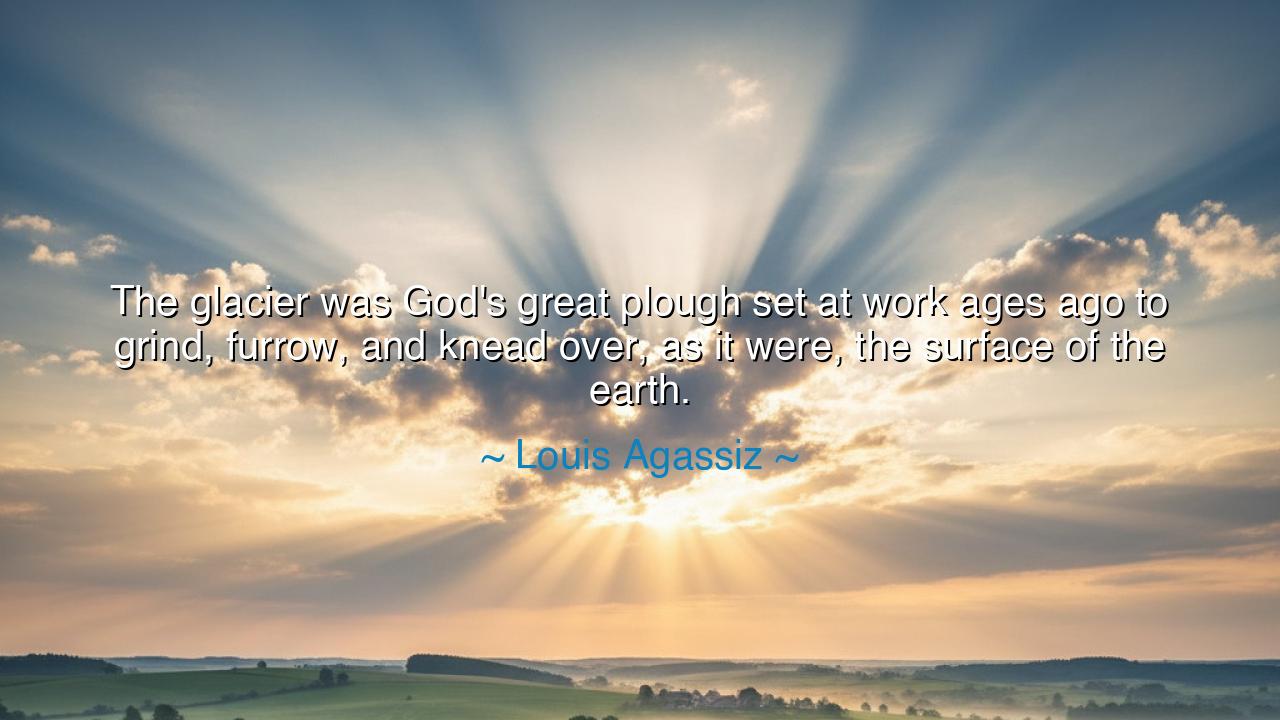
The glacier was God's great plough set at work ages ago to
The glacier was God's great plough set at work ages ago to grind, furrow, and knead over, as it were, the surface of the earth.






In the vast and silent expanse of the earth, one perceives the handiwork of forces both ancient and divine. Louis Agassiz speaks of this marvel when he declares, “The glacier was God’s great plough set at work ages ago to grind, furrow, and knead over, as it were, the surface of the earth.” These words summon a vision of the world as a living canvas, shaped by time and the deliberate hand of creation. The glacier, immense and relentless, becomes not mere ice but an instrument of cosmic artistry, molding the land with patience and power beyond human comprehension.
To call the glacier God’s great plough is to see nature as a collaborator in the divine plan. Each furrow carved into the rock, each valley ground and smoothed, tells a story of labor spanning countless ages. Agassiz’s insight reveals that the earth itself is a testament to persistence and force applied with precision, a sculpture of slow and deliberate creation. Like the cultivators of old who tilled the soil to yield bounty, the glacier shapes the world in preparation for life and sustenance.
The action to knead over the surface of the earth evokes a tenderness alongside the might. It is not mere destruction, but a careful shaping, a melding of roughness into form. Mountains are polished, valleys deepened, and rivers guided along new paths, all by the patient motion of ice and time. In this, one perceives a balance of power and purpose: the raw force of nature harnessed to a vision of order, as if the earth itself were a canvas upon which the divine craftsman worked.
The origin of this wisdom lies in the observation of the natural world. Ancient peoples revered mountains, rivers, and storms, seeing them as instruments of gods shaping the land and human destiny. Agassiz, a scientist of keen eye and poetic mind, recognized that glaciers were not only geological phenomena but sacred agents of transformation. His words echo the timeless human understanding that the forces of the world, though immense and often unseen, carry with them the fingerprints of a higher order.
Thus, let this teaching endure: behold the glacier, not as cold and indifferent, but as a mighty plough of creation, grinding and shaping the earth across the eons. In its patient and relentless labor, one glimpses the grandeur of time, the artistry of force, and the harmony of purpose. From this vision, the generations learn to honor the surface of the earth, understanding that its rugged beauty is both the work of nature and the trace of the divine hand.






AAdministratorAdministrator
Welcome, honored guests. Please leave a comment, we will respond soon